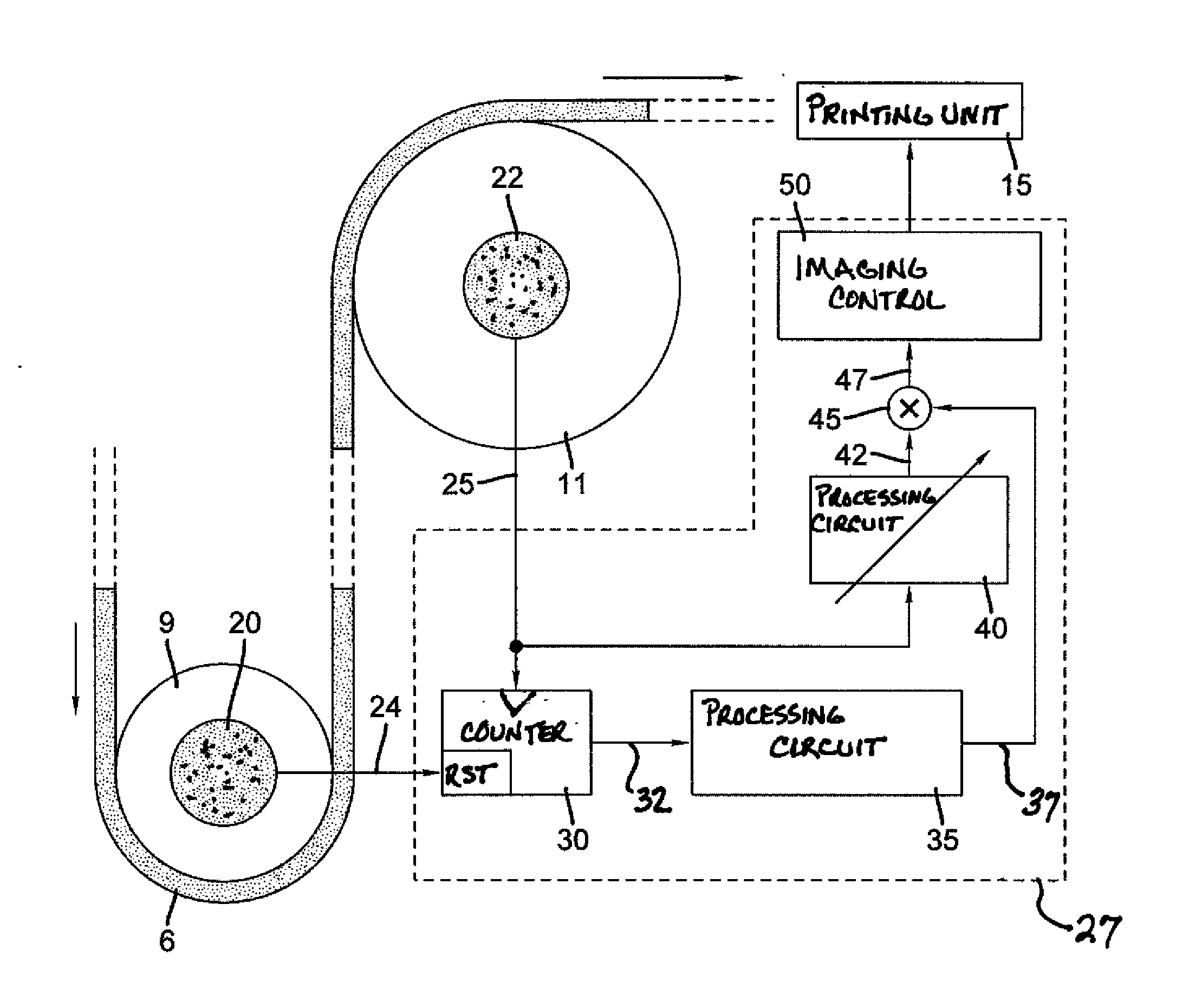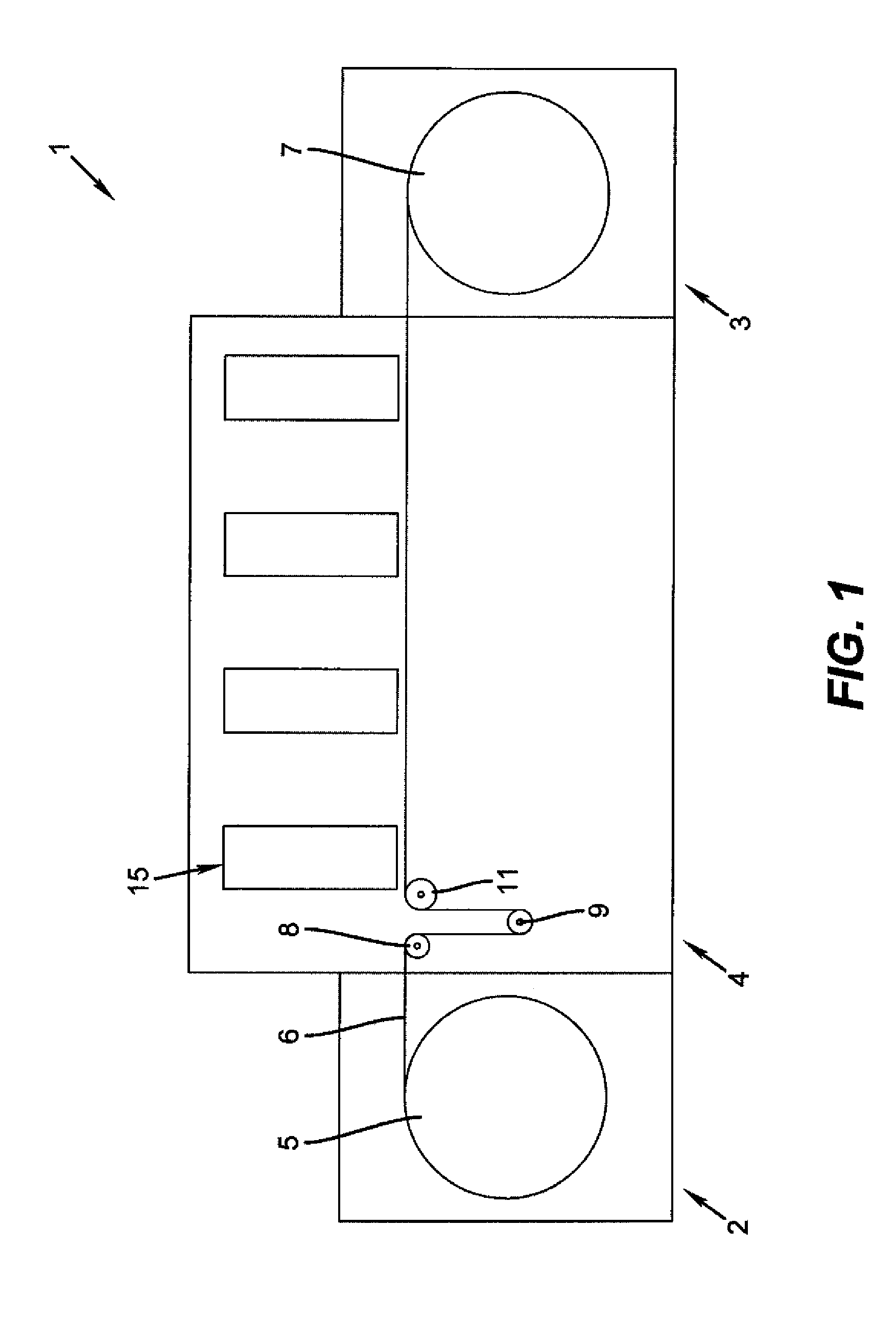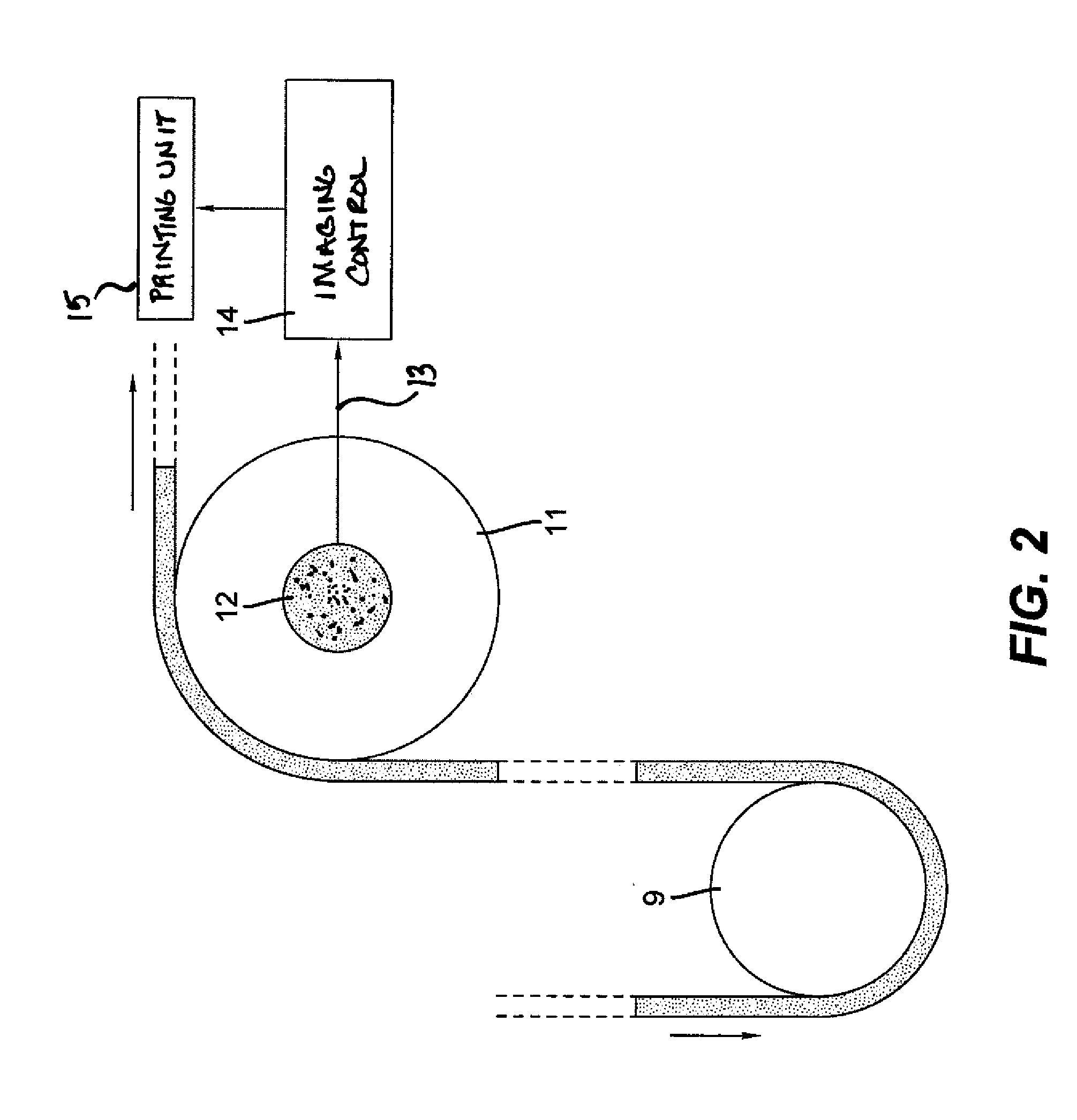Method and device for automatically adapting a write cycle in a digital printing machine
- Summary
- Abstract
- Description
- Claims
- Application Information
AI Technical Summary
Benefits of technology
Problems solved by technology
Method used
Image
Examples
Embodiment Construction
[0040]In the description hereinafter, information regarding location or direction primarily relates to the representations in the drawings and should thus not be viewed as restrictive; however, such information can also relate to preferred final arrangements.
[0041]FIG. 1 is a schematic side view of a digital printing machine 1 for web-shaped printing materials 6. The printing machine 1 includes an unwinder 2, a winder 3, as well as an interposed printing region 4. A printing material roll 5 is rotatably supported in the unwinder 2, from where the printing material 6 is passed through the printing region 4 to a printing material take-up roll 7 in the winder 3.
[0042]During the printing operation, the printing material 6 is conveyed from the printing material roll 5 to the printing material take-up roll 7, i.e., via a plurality of transport or guide rollers 8, 9, 11 in the printing region 4, only three of the rollers are shown to simplify the drawing. Hereinafter, for simplification, s...
PUM
 Login to View More
Login to View More Abstract
Description
Claims
Application Information
 Login to View More
Login to View More - R&D
- Intellectual Property
- Life Sciences
- Materials
- Tech Scout
- Unparalleled Data Quality
- Higher Quality Content
- 60% Fewer Hallucinations
Browse by: Latest US Patents, China's latest patents, Technical Efficacy Thesaurus, Application Domain, Technology Topic, Popular Technical Reports.
© 2025 PatSnap. All rights reserved.Legal|Privacy policy|Modern Slavery Act Transparency Statement|Sitemap|About US| Contact US: help@patsnap.com



